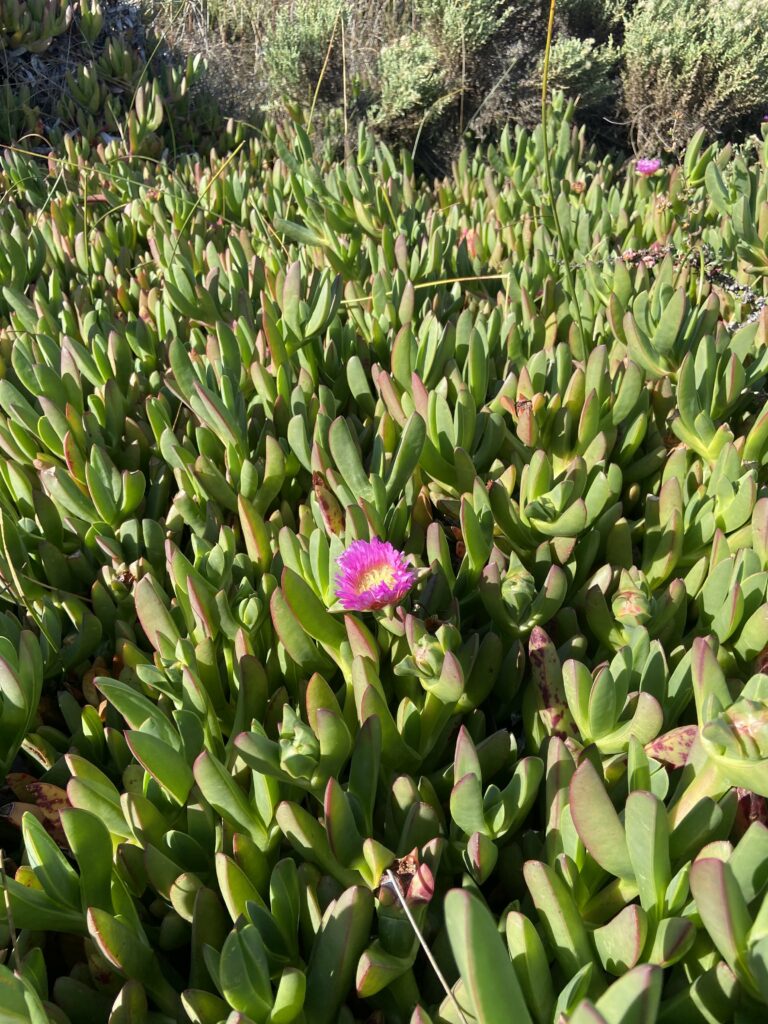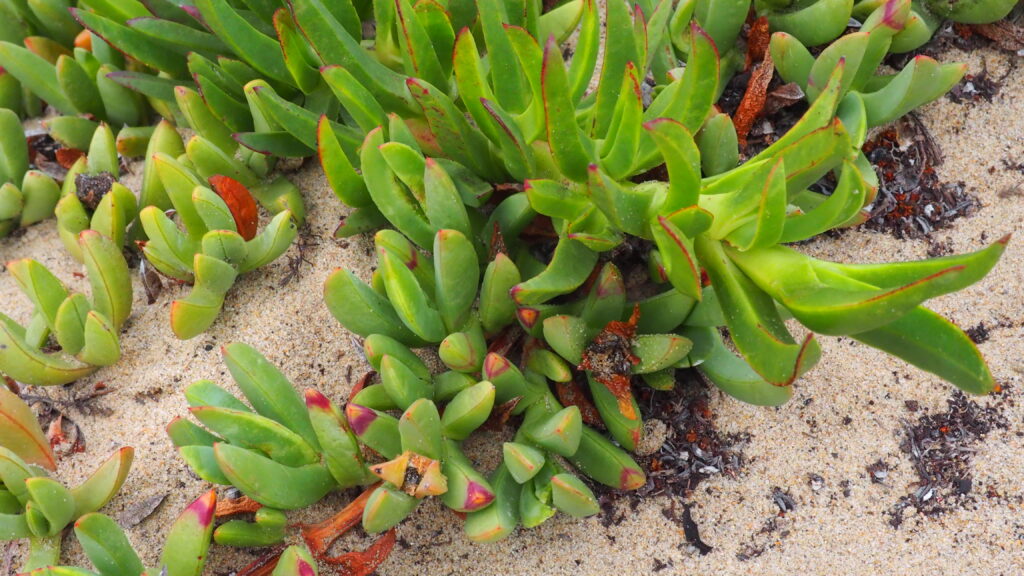
Common name(s): Sea Fig, Ice Plant, Chilean Sea Fig
Family: Aizoaceae - Stone Plant Family
Species: Carpobrotus chilensis
Commonly found: Found in coastal dunes, foredunes and back dunes, coastal grasslands, chaparrals, coastal bluff scrubs, sandy shores, rocky seashores, margins of estuaries, and along roadsides.
Size: Flowers are 1.25" to 2" in diameter
Origin: Invasive. May have been introduced during California's Spanish contact era.
Description: Ice Plants' flowers open in the morning and close at night, and can bloom and fruit year-round. The fruit has 8–10 chambres. Ice plant is highly invasive. It now inhabits coastal scrub, grasslands, chaparral, bluffs, dunes, and beaches, where it creates dense mats that increase soil organic matter over time, allowing new non-native species to invade. Ice Plant propagates by seed and vegetatively. Even small stem fragments can regenerate into a new plant, making population control difficult.

Upcoming Events
Nipomo, 93444 United States
Newsletter
Our newsletter keeps you up to date with the latest information about our exhibits, upcoming events, and programs.


